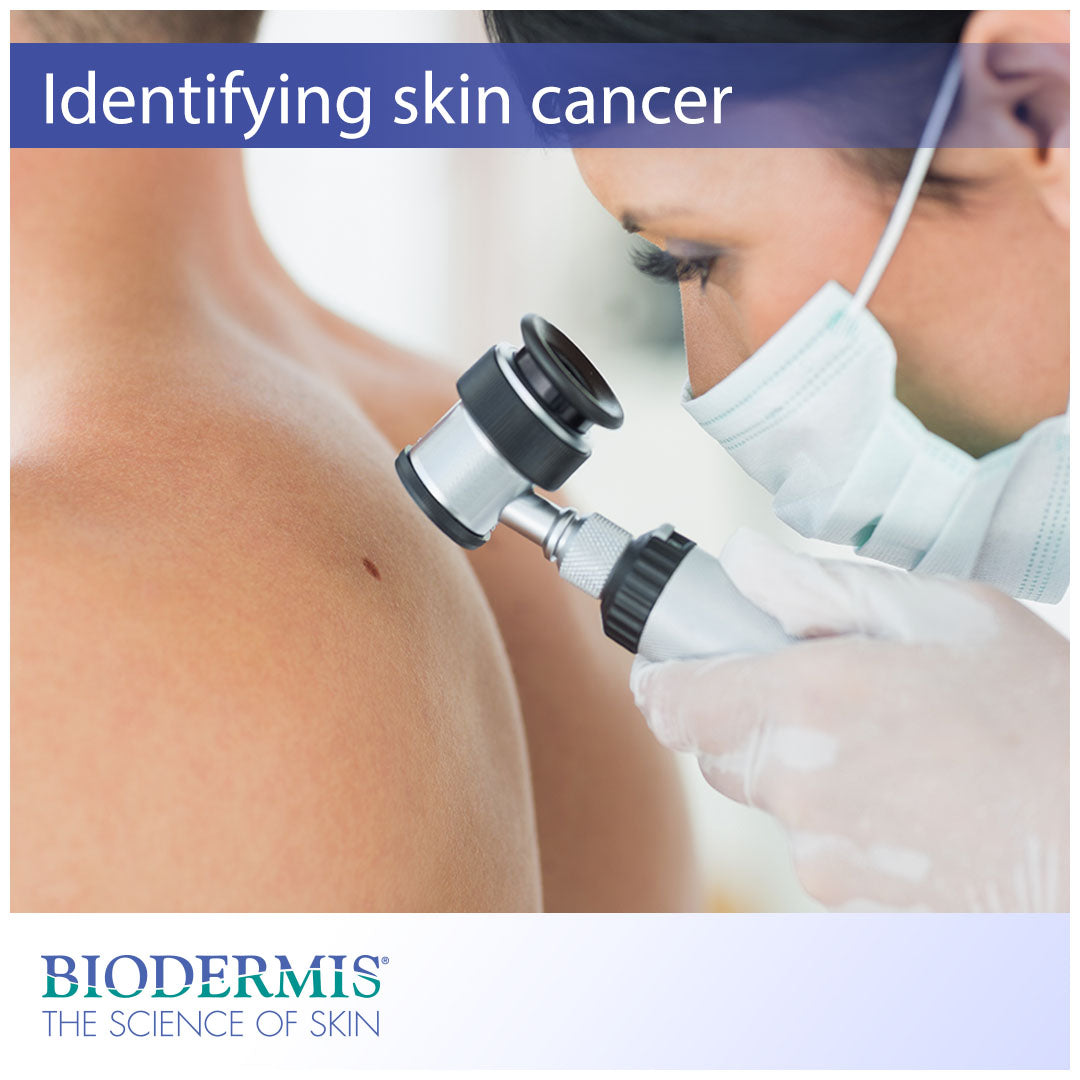Skin cancer is the most ubiquitous form of human cancer that affects more than one million Americans every year. About one in five Americans are likely to develop skin cancer at some point during their lives. It is important to get routine checkups by your dermatologist because people that have had skin cancer once are more likely to develop it again. Luckily, most skin cancers are easy to identify and treat when they are caught early. However, the longer you wait, the more dangerous the cancer becomes. There are three main categories of skin cancers that you should know about: basal cell carcinoma, squamous cell carcinoma, and melanoma.
Continue reading to learn more about the different types of skin cancers and how to identify them.
• Elevated pink or translucent bumps with a small, round edge and tiny, visible blood vessels
• Small pigmented bumps that look like rounded moles on the skin’s surface
• A sore that repeatedly opens and re-opens
• A white, scaly scar with a waxy appearance and without a clearly defined border
Continue reading to learn more about the different types of skin cancers and how to identify them.
Basal cell carcinoma
This is the most common form of skin cancer with more than 3 million US cases per year. Basal cell carcinoma forms in the deepest layer of the outermost layer of skin, the epidermis. This is also where basal cells are formed—the new skin cells that replace old ones as they die off. When the skin is exposed to too much UV radiation from direct sunlight, the body’s natural repair system can become damaged; this is when cancer is able to take root. Basal cell carcinoma generally forms as a slow-growing tumor that does not metastasize (spread) beyond the initial cancer site. This is a good thing because it allows for easy treatment in a very particular area of the skin. Basal cell cancer can be identified by the following characteristics:• Elevated pink or translucent bumps with a small, round edge and tiny, visible blood vessels
• Small pigmented bumps that look like rounded moles on the skin’s surface
• A sore that repeatedly opens and re-opens
• A white, scaly scar with a waxy appearance and without a clearly defined border
Squamous cell carcinoma
Squamous cells are the thin, flat cells that make up the outermost layer of the epidermis. Squamous cell carcinoma is a cancer that occurs when changes are made in the DNA structure of the squamous cells, causing them to multiply uncontrollably. Approximately 250,000 new cases of this type of skin cancer are detected every year. Most frequently, squamous cell carcinoma develops on the scalp, face, ears, and back of the hands. However, you should be aware that it can develop anywhere on the body, including inside the mouth and on the lower body. In its early stages, squamous cell carcinoma can present itself as actinic keratoses, which are dry, scaly lesions that are flesh-colored, reddish-brown or yellow black. Middle-aged people with fair skin who have a history of sun exposure are more at risk for developing this type of cancer.Melanoma
Melanoma is the least common of the three skin cancers mentioned in this article, but it is also the most severe. Interestingly, young adults ages 25-29 are more at risk for melanoma than the other form of skin cancer. The reason it occurs in young adults more frequently is due to lifestyle choices early in life. The practice of habitually tanning can put one at greater risk for this cancer to develop. Melanoma develops in melanocytes, which are cells located in the deepest layer of the epidermis. Melanocytes are responsible for producing melanin, which is the pigment that gives the skin its color. Melanoma can spread quite quickly to internal organs and the lymph system, making it a dangerous, malignant form of cancer. Melanoma can look like common moles and can also grow inside of preexisting moles. This is why self-examinations and doctor checkups are crucial for detecting it.Biodermis is an innovative market leader with 30 years of expertise in the medical silicone industry. Visit Biodermis.com today to explore a complete range of scar management and post-operative care solutions.
PHYSICIANS AND MEDICAL PROFESSIONALS: REFER OR RESELL?
Biodermis offers custom tailored referral programs designed to simplify and reduce the cost of your patients' post-op care. Additionally, we offer professional pricing if you opt to retail our products. Give us a call at 800.322.3729, and we will be happy to provide additional details on these programs.





